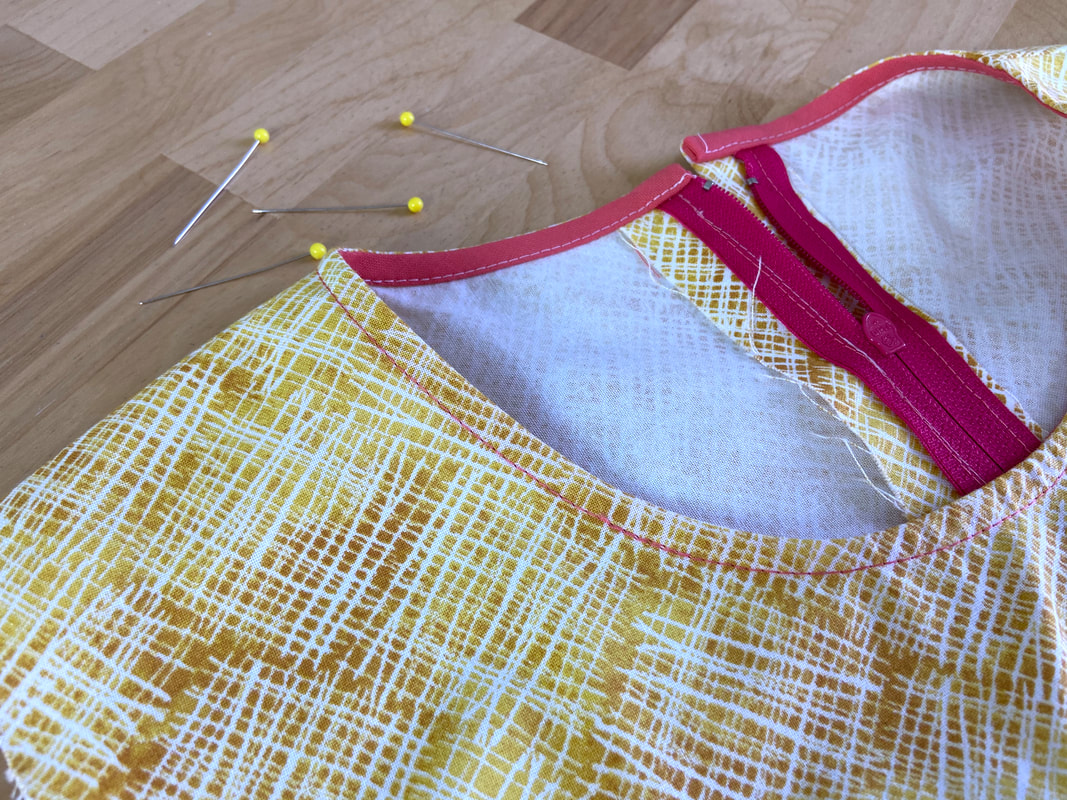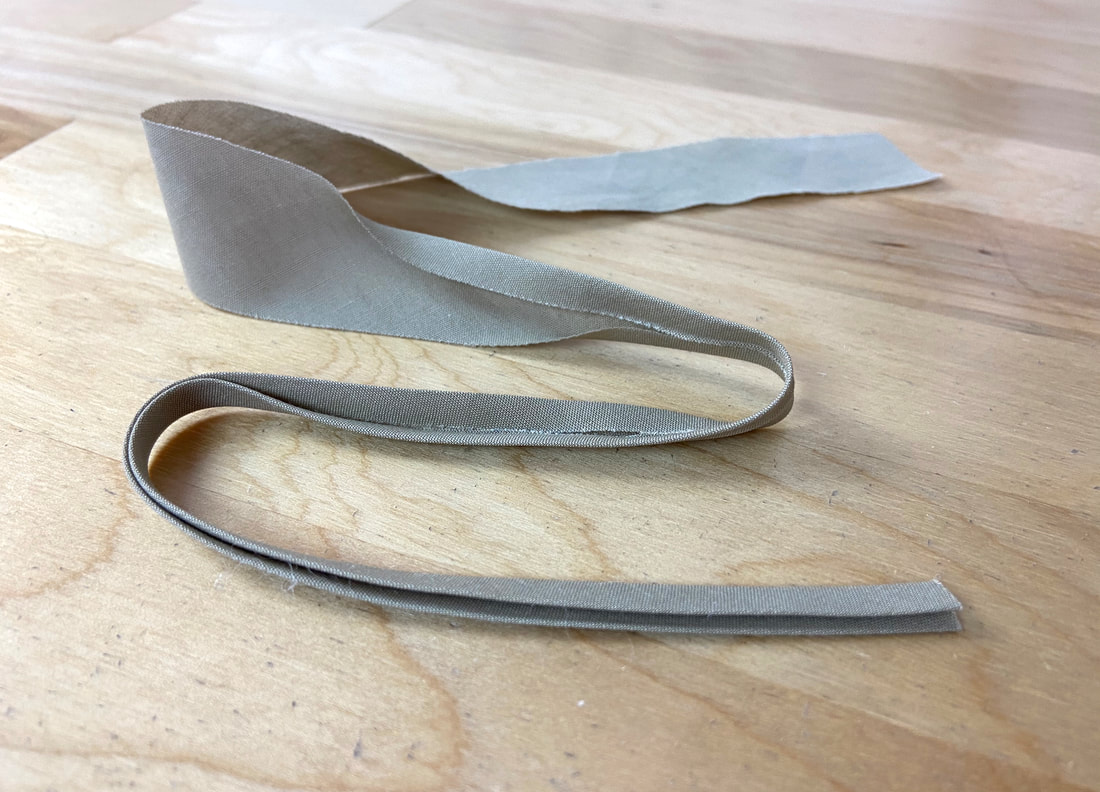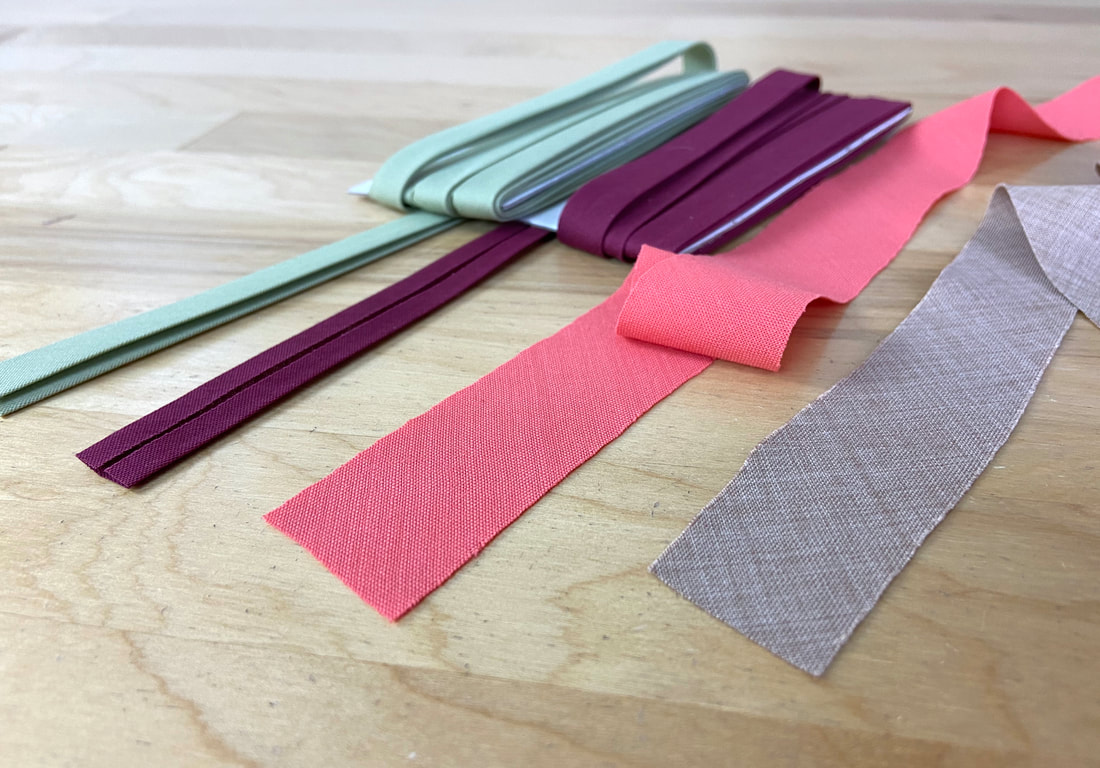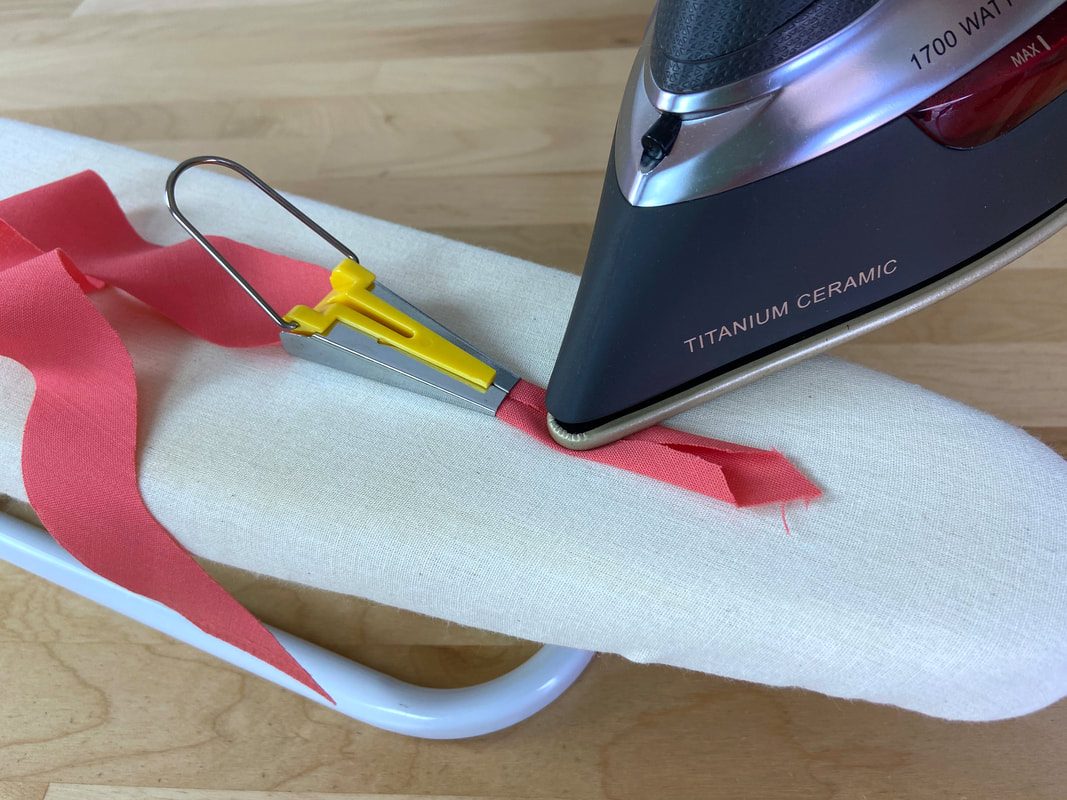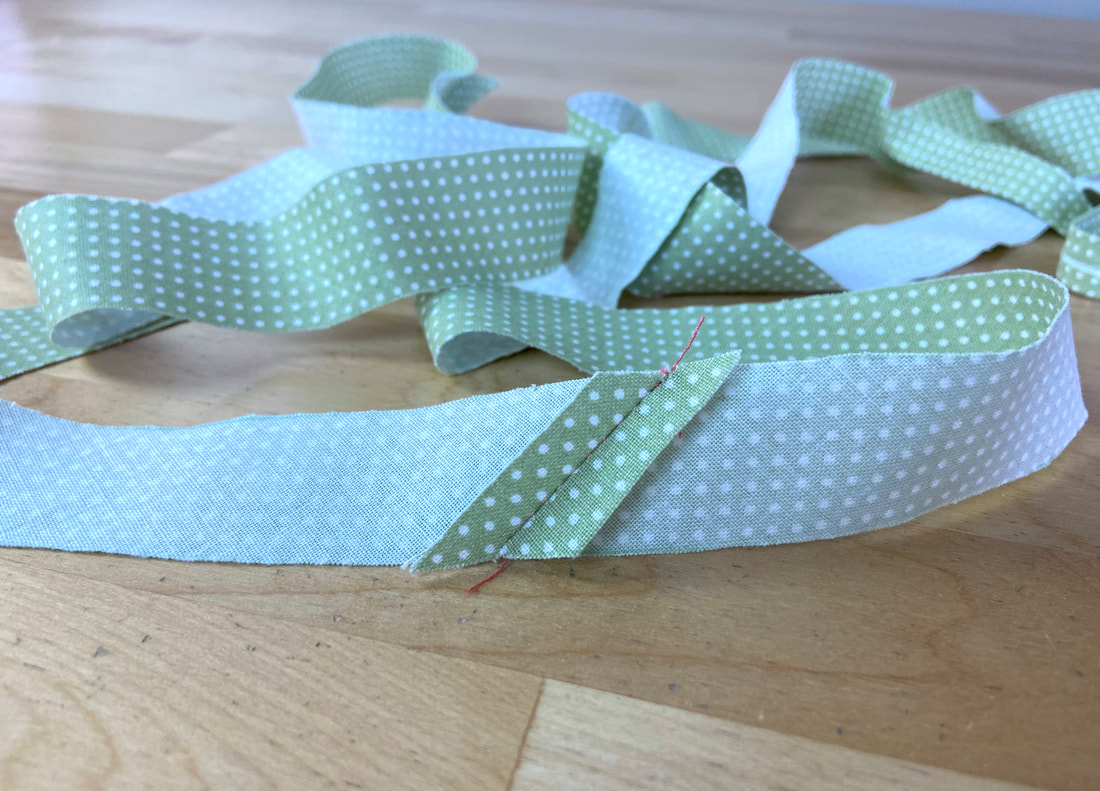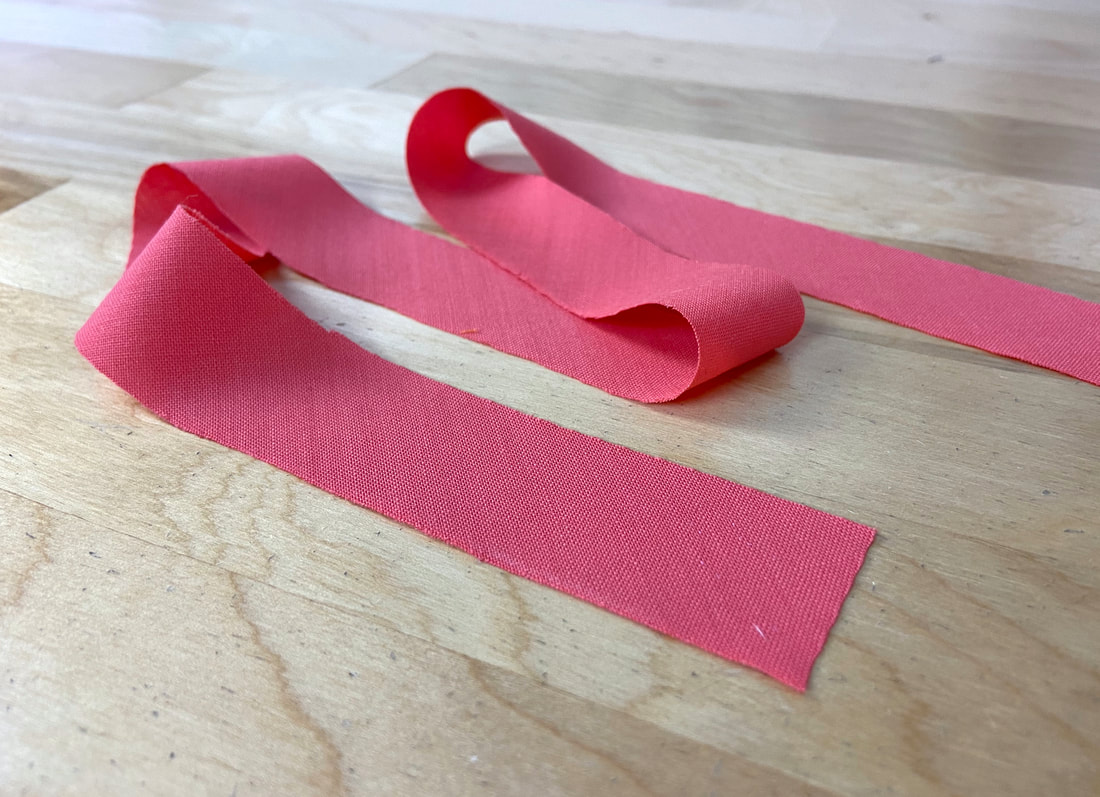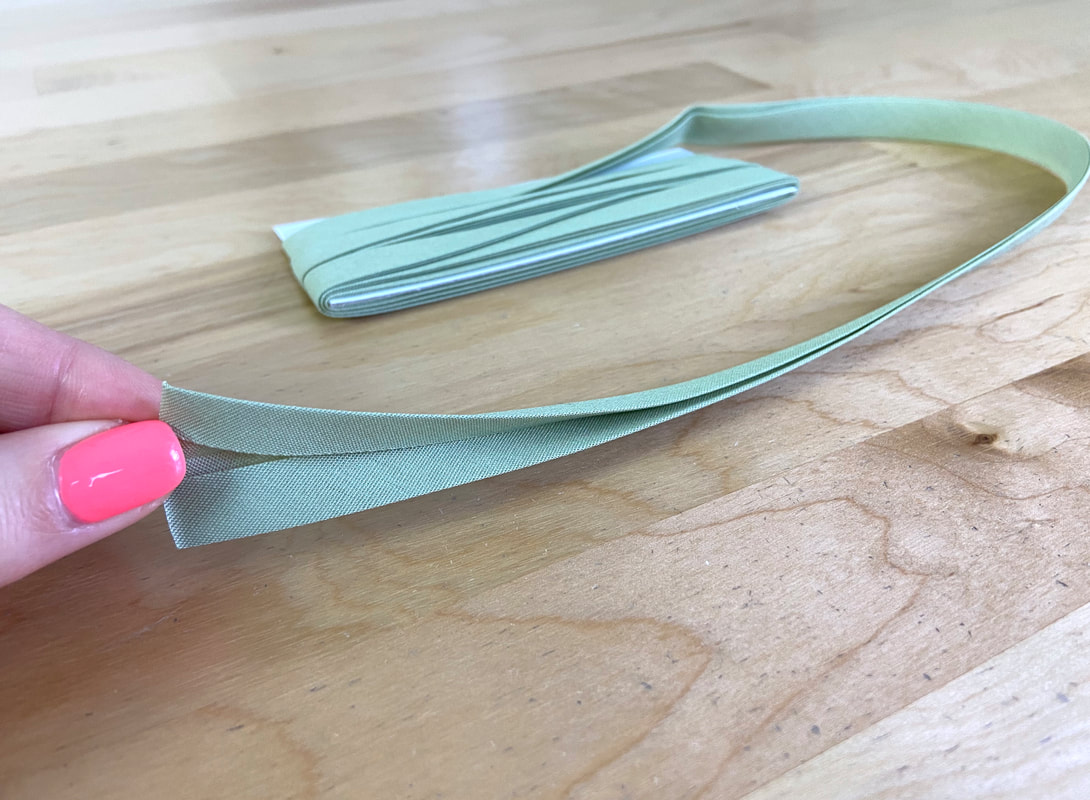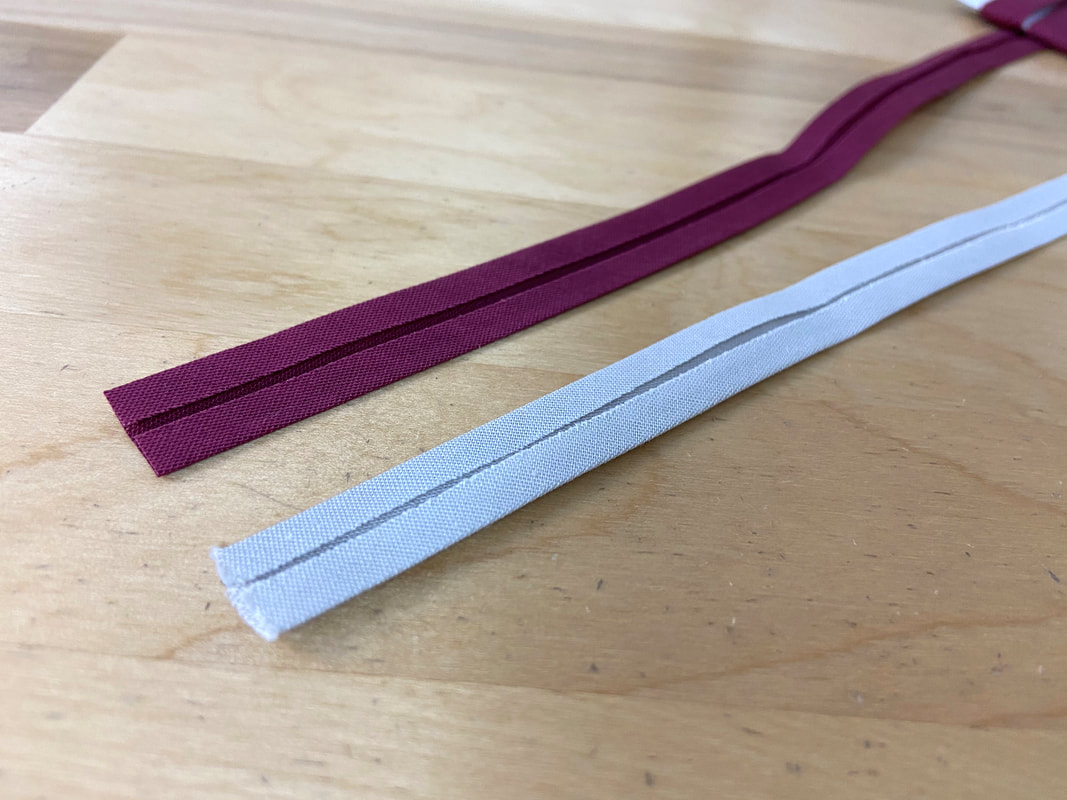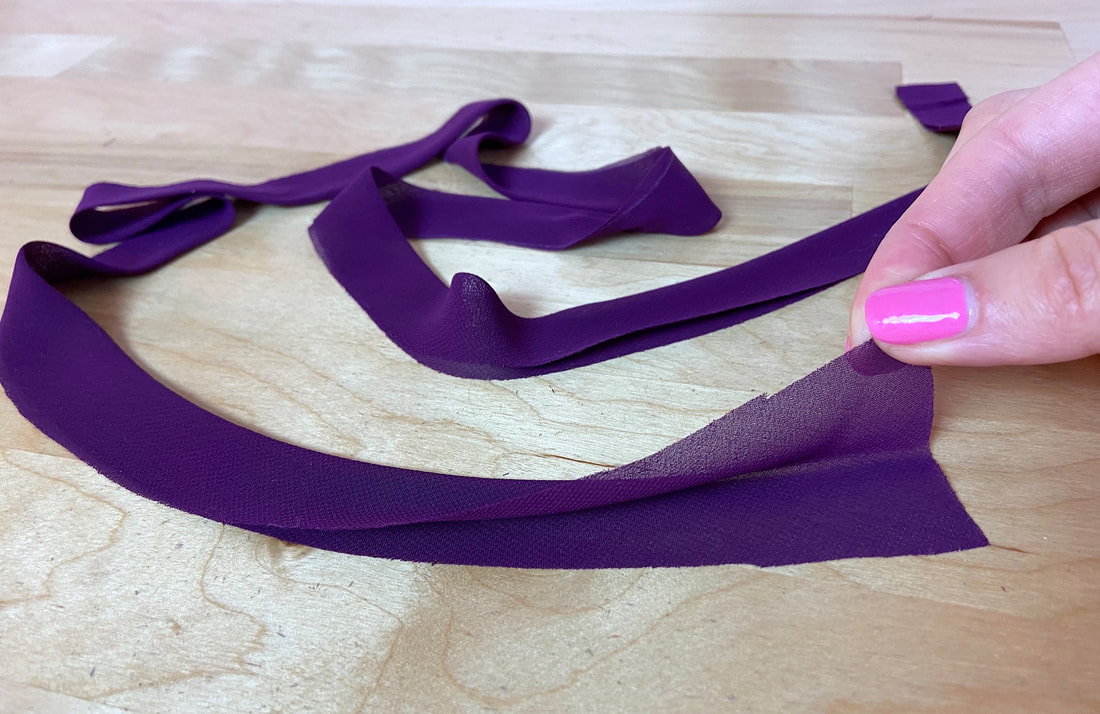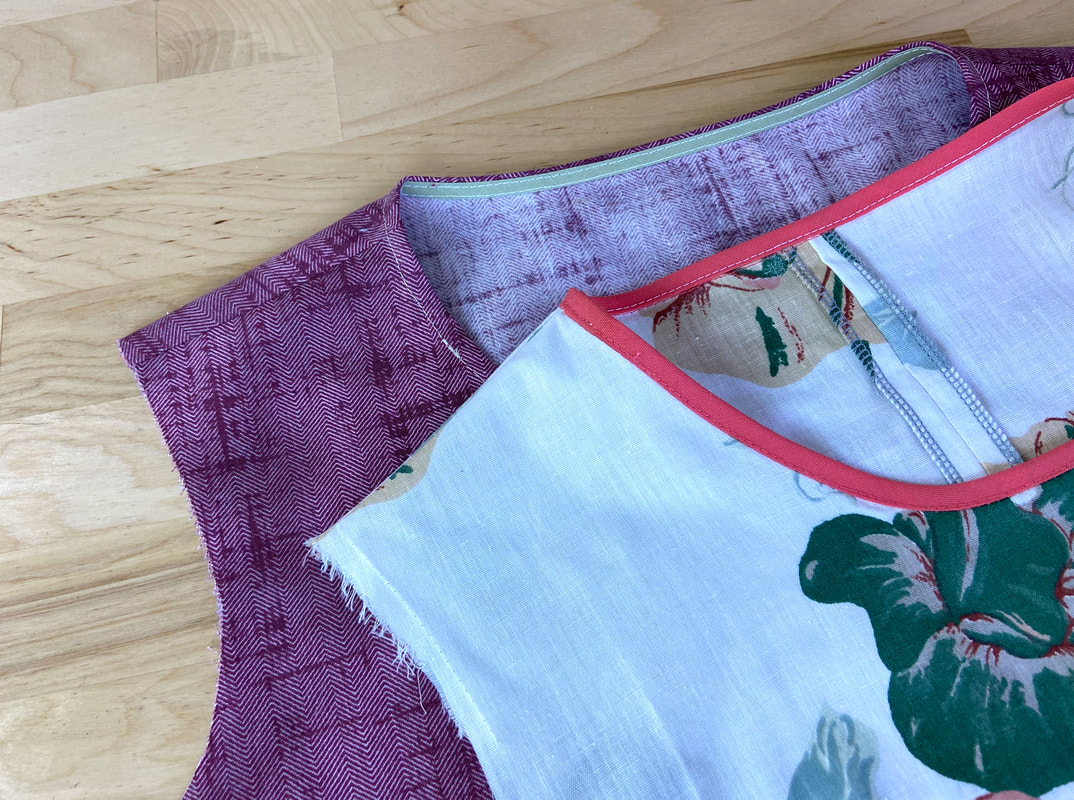A bound neckline finish is perhaps the most convenient and commonly used in dressmaking- It is easy to apply, does not create any bulk, and works well with most casual styles.
One tricky part about sewing a bias binding application is achieving a smooth, even stitch around curved neckline edges. With some practice however, this may very well become your go-to technique for unlined, un-faced garments.
What Is Bias Binding?
Bias binding is constructed from a strip of fabric, cut on the fabric bias (diagonally against the selvage edge) and then folded lengthwise twice or three times to enclose all its raw edges. The fabric strip has to be cut on the bias to provide stretch and flexibility such that the binding can be easily molded along curved edges without causing any strain in the finished garment.
Bias binding can be store-bought in a single or double pre-folded style, or homemade by cutting and folding the bias fabric strips yourself. Making it at home, of course, is more time consuming. However, it yields a better result as it allows you to use a matching fabric or a contrast fabric/color of your choice.
You can use binding pressing tools to aid in the folding and ironing process.
It is also important to note that bias binding should be constructed in a continuous strip. The only interruption will occur at the beginning and end of the binding application. For that reason, multiple cuts of bias binding are often sewn together using a diagonal seam, to construct the desired binding length.
For pre-packaged binding, bias strips are already pre-folded and stitched together for the standard package length.
You can learn how to make continuous binding at home by following the steps in this tutorial: How To Sew Continuous Bias Binding
Types Of Bias Binding And Folding Styles
Single layer binding. A single layer binding is not pre-folded but rather sewn as a plain fabric strip which has been measured and cut to 3 times the desired binding width. A single layer binding is folded in the sewing process, wrapping it around the neck edge and thus enclosing the binding's lengthwise edges.
Double fold binding is considered a standard in quilting and dressmaking. The bias fabric strip is cut four times the finished binding width, and pre-folded three times to enclose its raw edges. In this folded position, the garment's raw edge can simply be inserted in the slot created by the binding fold for a clean, professional finish. One important thing to note about a double fold binding is that one of its folded edges should be slightly wider. The wider portion is positioned on the fabric's underside (in the application process) and facilitates the topstitching process.
Single fold binding is folded twice with its lengthwise edges meeting in the center. This is another common binding fold available in a pre-packaged option. Single fold binding is easy to work with providing a convenient way to enclose edges that are more difficult to finish, such as corners and abruptly curved edges.
Double layer binding is unique in its folding style and quite easy to align and stitch in the application process. The bias strip is folded once down the center and pressed in this position. In the application process, the double layer binding is aligned to the garment with raw edges matching, after which the binding's fold is simply brought over the raw edges to fully enclose them. A double layer binding style is used most commonly with sheer, light fabrics.
So when should bias binding be used to finish a neckline edge? Generally, you should use bias binding with lightweight or medium-weight garments that are not compatible with lining or facings either due to the fabric or the garment's design choice.
A bound neckline finish is visible on the face of the garment either in the form of the binding strip itself or the topstitch used to enclose the neckline and binding layers to the inside of the garment. For that reason, this finish is suitable for more casual styles that feature a less tailored, less structured look.

